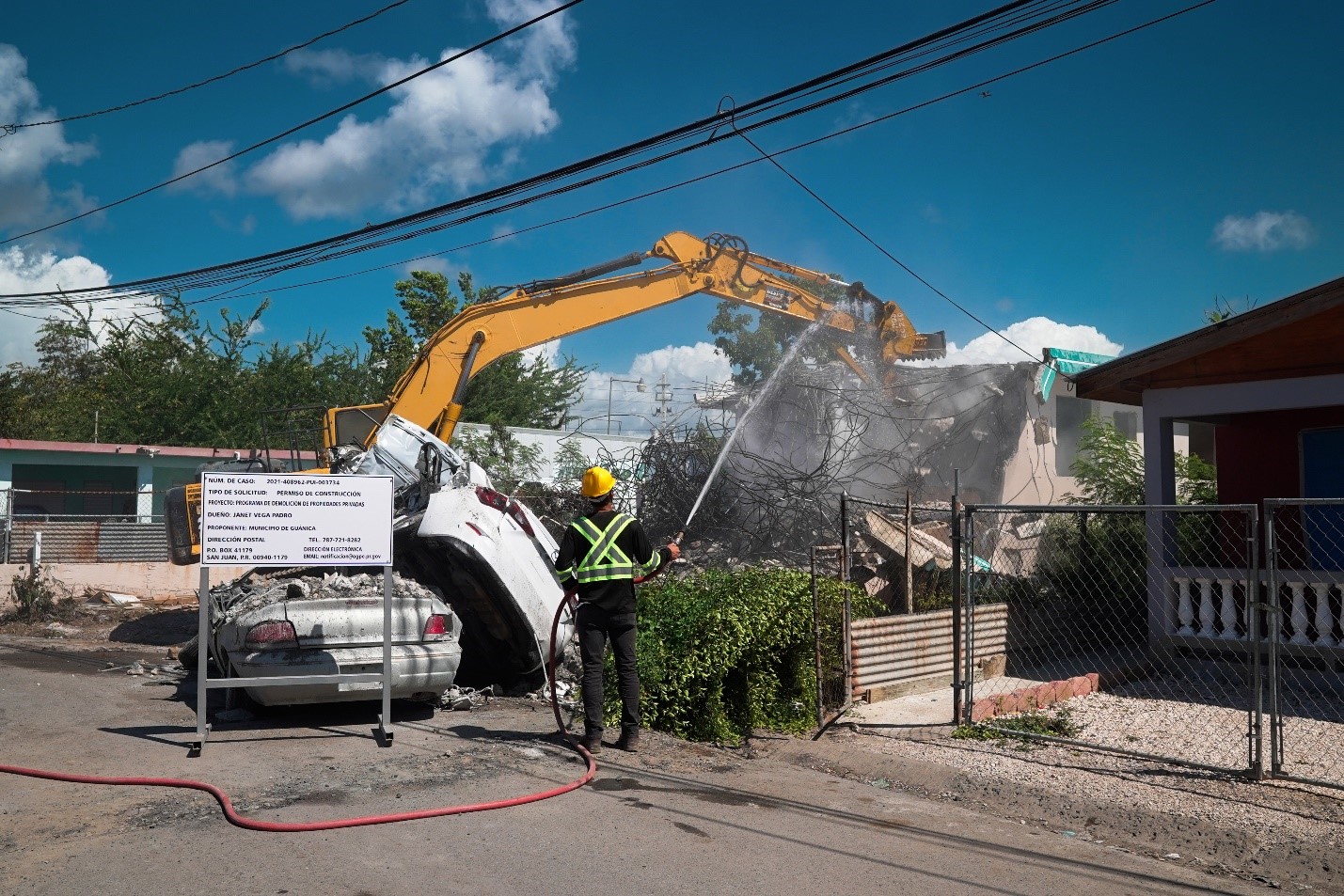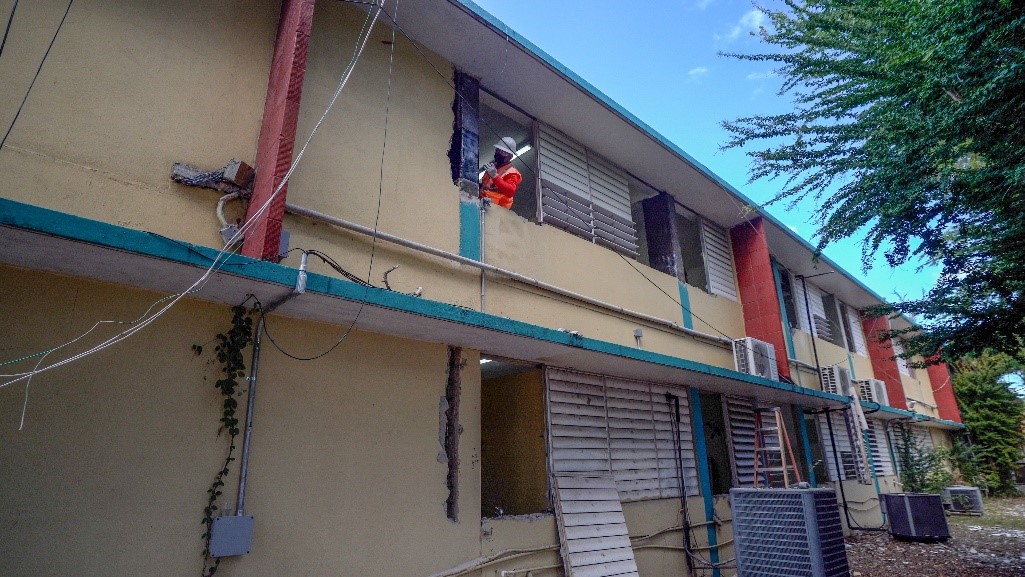Debris removal is underway for private properties in the south that were destroyed by the earthquakes
GUAYNABO, Puerto Rico – Two years from the series of earthquakes that hit Puerto Rico at the end of 2019, the recovery continues with the help of over $523 million allocated by the Federal Emergency Management Agency (FEMA). The funds are distributed among projects comprising the 14 municipalities of the Southern, Western and Central parts of the island.
Among the structures with most damage because of the earthquakes were the schools on the area, many of which had the “short columns” structural problem, which makes them more vulnerable against seismic events. To repair these and other structural damages on 102 schools, FEMA allocated an additional more than $178.3 million in 2021 to the Department of Education.
“Puerto Rico’s history changed because of these earthquakes. As of today, over 518 projects have funds from the agency, mostly for schools and municipalities. We seek to take advantage of this unique opportunity to strengthen the structures where public education is given and additional spaces within the affected area,” said the Federal Disaster Recovery Coordinator, José G. Baquero.
According to the federal agency, in addition to repair and reconstruction work for the schools, public buildings and roads, the efforts include private property debris removal. Over 86 residences in Guánica and Yauco have already been demolished, which will start the long-term recovery of these families.
In this journey towards recovery is Janet Vega Padró, resident of the Esperanza neighborhood in Guánica, who lost her home because of the earthquakes. “The first step has already been taken, which is the demolition,” while she added that she expects to begin rebuilding her home with the funds she received from FEMA.
Public Safety Funds
On the other hand, public buildings like police stations, fire stations and judicial centers also received federal allocations for repairs. One of these obligations to the Public Buildings Authority was of over $8.4 million to repair facilities on the municipalities at the area.
According to the Adjutant General for the Puerto Rico National Guard, General José Juan Reyes, the experience with the earthquakes taught us to be more proactive and prepared. “We acquired two [pieces of] equipment known as Western Shelters on the civilian version. FEMA acquired that equipment and we installed and enabled them this year. It’s a base camp with a 300-person capacity, but it has a washer, dryer, kitchen, through some containers and a tent cistern that are useful for any emergency,” said Reyes.
When faced with the question of whether the Puerto Rico Seismic Network has introduced new technologies as a result of the earthquakes, the geophysicist and Director of the Network, Dr. Víctor Huérfano, said that the seismic monitoring infrastructure was completely repaired after Hurricane María. “FEMA helps us, the Federal Geological Survey also lends its support and the Mayagüez Campus of the University of Puerto Rico. Fortunately, when the seismic events occurred, the monitoring infrastructure had already been recovered to a 100 percent. And we not only repaired it, [but we also] improved it,” he said.
Manuel A. Laboy Rivera, director of the Central Office of Recovery, Reconstruction, and Resilience (COR3), said that thanks to the collaboration between FEMA, the subrecipients and COR3, in 2021 the inspections were advanced to give way to the reconstruction process of multiple facilities.
“In 2022, we will continue working on the obligation of more than 200 projects estimated at more than $500 million in federal funds from FEMA; with those already obligated, we will begin the process of contracting engineering and architectural services, and others will begin the auction and reconstruction process during the first months of the year,” Laboy Rivera said.
For more information about Puerto Rico’s recovery from the earthquakes, visit fema.gov/disaster/4773 and recuperacion.pr. Follow us on social media at Facebook.com/FEMAPuertoRico, Facebook.com/COR3pr y Twitter @COR3pr..

GUÁNICA, Puerto Rico (November 8, 2021) – According to the federal agency, in addition to repair and reconstruction work for the schools, public buildings and roads, the efforts include private property debris removal. Over 86 residences in Guánica and Yauco have already been demolished, which will start the long-term recovery of these families. Photo FEMA / Eduardo Martínez

PONCE, Puerto Rico (December 17, 2021) – Among the structures with most damage because of the earthquakes were the schools on the area, many of which had the “short columns” structural problem, which makes them more vulnerable against seismic events. To repair these and other structural damages on over 126 schools, FEMA allocated an additional more than $178.3 million in 2021 to the Department of Education. Photo FEMA / Eduardo Martínez

PONCE, Puerto Rico (December 17, 2021) – Two years from the series of earthquakes that hit Puerto Rico at the end of 2019, the recovery continues with the help of over $523 million allocated by the Federal Emergency Management Agency (FEMA). The funds are distributed among projects comprising the 14 municipalities of the Southern, Western and Central parts of the island. Photo FEMA / Eduardo Martínez


